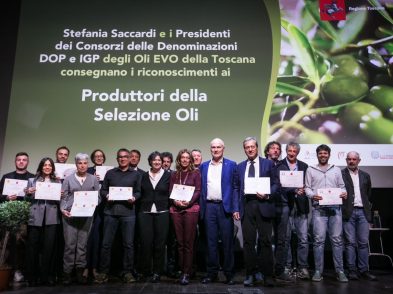After a certain age, Christmas can lose a bit of its magic. Fortunately just as the magic begins to vanish, it becomes legal to drink and we can put the sparkle back into the season.

Special sparklings
Italy makes spectacular sparkling wines. Champagne is always a delight, as delicious as sunlight on the face, but Veneto and the vineyards around the hills of Valdobbiadene and Conegliano produce beautiful Prosecco grapes and some very special wines. Estates such as Malibran are making Prosecco of such complexity and savouriness that, with a fish supper on Christmas Eve, you won’t need to open any other bottle.
Up north in Franciacorta, the Champagne grape varieties, Chardonnay and Pinot Noir, are growing happily in Italian soils, turned into a sparkling wine using the same method as Champagne, where everything—all the bubbles—happens in the bottle, not in the tank.
The vintage wines you can buy from this winemaking area are also rewarding to drink (they are usually sparkling wines made according to the Champagne, or ‘traditional’, method). Vintage wines are only made in outstanding years, so if the vintage, like 2009, appears on the label then you know it comes from that year alone. Good fizzes have tiny bubbles that lengthen up in neat lines from the bottom of the glass to the top, like pearl necklaces being pulled from glamorous oysters. Cheap fizz, on the other hand, is easy to spot because the bubbles pop sporadically in the glass, their texture is rough and the wine feels aggressive.
If, like me, you’re heading home to England for the festive season, consider an English sparkling for aperitivo hour, Christmas Day breakfast or indeed as a match for the entire Christmas meal. These well-made sparkling wines work beautifully with plates heaving with an array of different ingredients. The best ones from producers such as Ridgeview, Gusbourne, Balfour and Nyetimber (apparently a royal favourite) have a subtle creaminess whilst also feeling crisp and refreshing. Italian feasters take note: sparklings from either Franciacorta or Sussex are a really smart match for tortellini in brodo.
Reds and whites. How to match wine with festive foods.
Think about wine like a seasoning: what’s your instinct when you sit down to your Christmas plate, be it turkey or fish, ham or capon—is it to add bread sauce or cranberry? A squeeze of lemon or a pinch of pepper? Do you want to go with the dish or against it? For example, an oaked Verdicchio from the Marche behaves a bit like a creamy sauce with capon or turkey. The wine goes with the dish, adding richness and weight. If, with the ham you’d like to spoon on a little cranberry sauce, then consider a Nebbiolo from north of Barolo, where the reds tend to have vibrant red fruit flavours and high, refreshing acidity that cuts through dense consistencies and saltiness.
During my time in Italy I’ve learnt never to add a squeeze of lemon to my fritto without tasting it first. I think of wine as performing the same trick, a gulp adding a crisp ‘citrussyness’ to every mouthful of fish. Mountain whites from Alto Adige and Etna work beautifully with seafood. Thanks to their cool growing climate they boast wonderful clarity of flavour. Working on several levels, they are capable of bringing much more to the party, a certain minerally quality and of course lively acid levels.
Pudding and panettone, cakes and cheese
This is where things get personal. Do you go sweet on sweet, dry on sweet or sparkling on sweet? Cheese before or after dessert? Cheese with port or red wine? Cheese with white wine or more sparkling (it really does work with everything).
Passito from Zibibbo grown on the tiny island of Pantelleria, off Sicily, is an exquisite match with panettone and an exotic choice for Christmas pudding. Dip panettone into a glass, or ignore the Christmas pudding altogether and just drink the passito.
Tuscan vin santo is ambrosial, five years in the making (ageing in tiny barrels). With its flavours of dried fruit and toasted nuts, sweetness and acidity, it’s mesmerising. Nothing else is needed to distract you from the cheeseboard, except a few crackers perhaps, explosive ones or not.
Emily’s festive wine suggestions
- MALIBRAN ‘Credamora Superiore’, Valdobbiadene, Veneto
- BELLAVISTA ‘Gran Cuvee Brut’ 2009, Franciacorta
- RIDGEVIEW ‘Bloomsbury’ NV, Sussex
- VILLA BUCCI Verdicchio Classico Riserva, Castelli di Jesi, Marche
- CANTINA TERLANO Pinot Bianco, Alto Adige
- PROPRIETA SPERINO ‘Uvaggio’ Lessona, Piedmont
- FELSINA Vin Santo, Castelnuovo Berardenga, Tuscany
- FERRANDES, Passito di Pantelleria, Sicily








